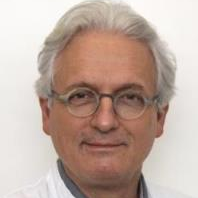3D Imaging, 3D Printing and 3D Virtual Planning in Dentistry
A special issue of Dentistry Journal (ISSN 2304-6767).
Deadline for manuscript submissions: closed (31 July 2017) | Viewed by 17350
Special Issue Editor
Interests: implantology; oral surgery; oral and maxillofacial surgery; jaw malpositions and craniofacial anomalies
Special Issues, Collections and Topics in MDPI journals
Special Issue Information
Dear Colleagues,
In recent years, interest in 3D imaging, 3D printing and 3D virtual planning used in clinical diagnosis, surgery planning and implant fabrication in dentistry, as well as head and neck surgery, has increased dramatically. This themed Special Issue aims to cover the most recent progress in the development of technologies for image acquisition systems and 3D virtual planning software, new advances in 3D planning and 3D printing technology in dental and head and neck treatment procedures.
The objective of this Special Issue is to provide a platform for oral, maxillofacial, ENT and dental scientists to share their research ideas and achievements.
Prof. Dr. Claude Jaquiéry
Guest Editor
Manuscript Submission Information
Manuscripts should be submitted online at www.mdpi.com by registering and logging in to this website. Once you are registered, click here to go to the submission form. Manuscripts can be submitted until the deadline. All submissions that pass pre-check are peer-reviewed. Accepted papers will be published continuously in the journal (as soon as accepted) and will be listed together on the special issue website. Research articles, review articles as well as short communications are invited. For planned papers, a title and short abstract (about 100 words) can be sent to the Editorial Office for announcement on this website.
Submitted manuscripts should not have been published previously, nor be under consideration for publication elsewhere (except conference proceedings papers). All manuscripts are thoroughly refereed through a single-blind peer-review process. A guide for authors and other relevant information for submission of manuscripts is available on the Instructions for Authors page. Dentistry Journal is an international peer-reviewed open access monthly journal published by MDPI.
Please visit the Instructions for Authors page before submitting a manuscript. The Article Processing Charge (APC) for publication in this open access journal is 2000 CHF (Swiss Francs). Submitted papers should be well formatted and use good English. Authors may use MDPI's English editing service prior to publication or during author revisions.
Keywords
3D imaging
3D virtual planning
3D printing
Cone-beam computed tomography (CBCT)
Computer-aided design (CAD)
Computer-aided manufacture (CAM)
Benefits of Publishing in a Special Issue
- Ease of navigation: Grouping papers by topic helps scholars navigate broad scope journals more efficiently.
- Greater discoverability: Special Issues support the reach and impact of scientific research. Articles in Special Issues are more discoverable and cited more frequently.
- Expansion of research network: Special Issues facilitate connections among authors, fostering scientific collaborations.
- External promotion: Articles in Special Issues are often promoted through the journal's social media, increasing their visibility.
- e-Book format: Special Issues with more than 10 articles can be published as dedicated e-books, ensuring wide and rapid dissemination.
Further information on MDPI's Special Issue policies can be found here.






